Reconstructing and Reinterpreting Lal Ded
by Dr. S. S. Toshkhani
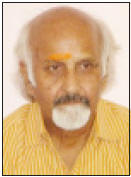 Lalleshwari, Lal Ded, or simply Lalla, as many like to call her, is not just
a medieval woman poet in whose verse we hear the first heart-beats of Kashmiri
poetry-she is easily the most popular and most powerful symbol of Kashmir's
civilizational ethos. While her 'vaaks' or verse-sayings continue to dazzle us
with their high wattage incandescence, her role as a spiritual leader who
resolved the crisis of her times caused by a clash of two belief and value
systems-one indigenous and the other alien cannot but be regarded as momentous,
whether or not history recognizes its true significance. In both these
capacities it was her intervention that ensured continuity and saved indigenous
cultural structures from a total collapse at a time when the advent of Islam in
Kashmir was accompanied by an unprecedented political and social upheaval.
Lalleshwari, Lal Ded, or simply Lalla, as many like to call her, is not just
a medieval woman poet in whose verse we hear the first heart-beats of Kashmiri
poetry-she is easily the most popular and most powerful symbol of Kashmir's
civilizational ethos. While her 'vaaks' or verse-sayings continue to dazzle us
with their high wattage incandescence, her role as a spiritual leader who
resolved the crisis of her times caused by a clash of two belief and value
systems-one indigenous and the other alien cannot but be regarded as momentous,
whether or not history recognizes its true significance. In both these
capacities it was her intervention that ensured continuity and saved indigenous
cultural structures from a total collapse at a time when the advent of Islam in
Kashmir was accompanied by an unprecedented political and social upheaval.
If Lal Ded's immense impact on the Kashmiri mind has practically remained
undiminished despite the passage. of almost seven centuries, it is essentially
because of the fusion of the poet and the saint in her, or, to use the words of
Dileep Chitre (which he has used for another great Bhakti poet, Tukaram),
because of "a poet's vision of spirituality and a saint's vision of
poetry" that she presents in her verses. We are amazed at her deep sense of
compassion, her mystical insights and spiritual vision, her profound awareness
of the human condition and her Shaiva-world view which makes her look at
existence as manifestation of one, indivisible, consciousness. More than
anything else, we are indebted to her for shaping the Kashmiri language in a way
that it formed the basis for the Kashmiris to forge their indigenous cultural
identity.
Ironically, this very image of Lal Ded as a spiritual giant and poetic genius
fused into one-reinforced by the many hagiographical accounts, myths and legends
surrounding her-has led to attempts at appropriating her for ideologies and
causes totally alien to her thinking and temperament. We thus come across not
one but several image constructs of the saint-poetess, some of them mutually
irreconcilable, linked inextricably with predilections, perceptions and motives
of those who have created them. And these tend to blur and distort facts about
her life, making it extremely difficult for us to arrive at what we can call an
authentic Lal Ded-a flesh and blood Lal Ded occupying a specific space and time
in history, or at least a poetic version of what Lal Ded was or must actually
have been like. With whims, fancies and notions being the basis of these various
constructs, we are left with the problems of exploring the true dimensions of
her creativity and of locating the real founts of her inspiration. And this
cannot be settled by mere interpretations of scholarly differences or semantic
hair-splitting. The task has been made immensely complicated by the intervention
of nearly seven hundred years of history about which people are still hesitant
to talk freely and openly.
The purpose of this paper is to examine some of the image constructs of the
saint-poetess which are patently false, and have no basis in facts, but are passed on as products of genuine
scholarship. These images and fabrications are being circulated persistently
with surprising frequency not out of any desire to present the truth, but to
suppress it. The most formidable attempt to appropriate Lal Ded in this manner
comes from those who want to snatch her for Islam. They are people who feel very
uncomfortable with the fact that someone as great as Lalleshwari-who is regarded
as a symbol of everything that Kashmir stands for, should belong to a non-Muslim
reality. Masquerading as scholars but motivated and conditioned by their
religious reflexes, they try to subvert this fact by floating imaginary
anecdotes about her conversion to Islam. One such anecdote that continues to be
repeated with total disregard to historical plausibility is that she met Sayyid
Mir Ali Hamadani, the Islamic missionary most revered by Kashmiri Muslims, and
received "spiritual enlightenment” from him. Sayyid Hamadani had come to
Kashmir with a large entourage of fellow Sayyids to escape the wrath of Timur
and there he engaged in proselytizing activities on a massive scale. Prof. Jaya
Lal Kaul has in his brilliantly researched book "Lal Ded" very
convincingly proved the utter impossibility of such a meeting having ever taken
place. Referring to Persian sources, he has quoted Mohammad Azam Dedamari's
explicit statement that the story of her being present before the Sayyid
"has not been held as proved by scholars". Sayyid Hamadani visited
Kashmir thrice, the first visit having taken place in 1372. And if Lal Ded died
in the reign of Shihab-ud-din, as Persian chronicles point out, he could in no
way have influenced her. Persian chronicler Peer Ghulam Hassan, too makes no
mention of a meeting between Lal Ded and Sayyid Mir Ali Hamadani, but states
that she did indeed meet Jalal-ud-din Bukhari and Sayyid Hussain Samanani and it
was at his hands that she was "converted" to Islam. ‘Bibi Lalla
Arifa', a pamphlet published from Lahore, to which Prof. Jayalal Kaul has
referred, is more categorical, saying that she accepted Islam at the hands of
Sayyid Hussain Samanani. "This should be obvious to all", the pamphlet
adds, emphasizing the claim and giving a fanciful account of the supposed
meeting. According to the pamphlet, Lal Ded ran for miles together to receive
Sayyid Samanani at Shopian and "being elated to receive the secret
doctrine, became his chief disciple". Repudiating this claim which Sufi,
the author of "Kashir", a history of Kashmir published from Pakistan,
says is based on "Lalla Arifa's own later day vaaks," Prof. Kaul
writes: "Not a single verse-saying of hers has been discovered up to date
even among the doubtful and spurious verse-sayings ascribed to her which would
bear out either this anecdote or similar other anecdotes concerning her".
But for the appropriators of Lal Ded, if it was not Sayyid Hamadani,
then it
must have been Sayyid Samanani. Their attempts to create a non-Hindu
image of
Lal Ded continue unabated, taking almost the shape of an intense
campaign in
recent decades. A special Lal Ded Number (1979) of Sheeraza, a journal
published
by the Jammu and Kashmir State Art Culture and Languages, for instance,
is
illustrative of this obsession which shows itself in article after
article
obviously with the editor's tacit agreement. One such article "Lal Ded
Shah
Hamadan ke Huzoor Mein" (Lal Ded in the Presence of Shah Hamadan),
written
by Mufti Jalal-ud-din, says, "It does not matter whether these anecdotes
are corroborated by history or not. It is eventually popular belief that
settles
the issue". Jalal-ud-din's is not just an individual opinion-it
represents
a whole mindset that shows no signs of changing even today. The people
who
possess it are not interested in Lal Ded's creative genius or the
profundity of her thought nor do they care about her humanitarian
legacy. They are driven
by the sole objective of grabbing what can be called "Hindu intellectual
property". That is why they show Lal Ded running towards a baker's oven
desperate to cover her nudity as she had seen a "man" when she
supposedly encountered Sayyid Hamadani. The miracle of the oven is
surely
prompted by a hegemonistic design to establish the superiority of Islam
over the
creed of the "infidels". Sayyid Hamadani was on a proselytizing
mission and what bigger fish could there have been for him to cast his
net ?
The Sufi image that some have tried to foist on Lal Ded is also a mischievous
and motivated construct as it is virtually an attempt to de-Hinduise her and to
create confusion about her faith. The man who began it all, though not exactly
with that intention, Sir Richard Temple, appears indeed to have been a confused
person, saying different things at different places. At one place he says that
Lalla was a Shaivite Hindu and at another place he discovers that "she
deeply and quickly absorbed the Sufi line of thought after her contact with her
contemporary and friend" Sayyid Ali Hamadani. Soon afterwards he counts
similarities in "the doctrine and practice of Naqshbandis and the Yogic
exercises of the Hindu Shaivas". Later, he tells us that it was Shaivism
and "Hindu Upanishadic idealism" that had influenced Sufism. If that
be the truth then how is it that she is influenced by Sufism as preached by
Sayyid Ali Hamadani? Why not directly by Hindu Upanishadic thought? If Sayyid
Hamadi was at all a Sufi, he was not of the type who would believe in the
doctrine of Wahadat-ul-Wujud or oneness of existence and certainly not in
universal brotherhood and love. The humiliating and degrading conditions he laid
down in his book "Zakhirat-ul-Muluk" to guide a Sultan in treating his
non-Muslim subjects are enough to prove this. The various Sufi orders said to
have been introduced during that time in Kashmir were all orthodox in nature,
preaching strict adherence to Shariah and not liberal humanism as is made out to
be. They remained confined to the correct practice of the Quaranic beliefs and
"hardly came out of zuhd, ibadat, taqwa and riyadat, the limits set by
their founders", having nothing to do with the type of Sufism based on the
doctrine of Mohi-ud-din ibn Arabi. Their emphasis was on proselytization and not
on the belief in unity of being and universal love.
Writers like P.N.K. Bamzai and Dr. R.K. Parmu, who followed Richard Temple in
his queer conclusions, created further confusion by making even stranger and
mutually contradictory statements. 'Lalleshwari's association with Shah
Hamadan", writes Bamzai, "was due to an identity of the faith of Sufis
and Hindu mendicants and saints in Kashmir", adding that "the order
she founded was an admixture of the non-dualistic philosophy of Shaivism and
Islamic Sufism". One is at a loss to understand what one can make of such
pronouncements which have nothing to do with history or facts of Lal Ded's life.
In what way was "the faith of the Hindu mendicants and saints of
Kashmir" different from that followed by the general mass of the people ?
And which religious or philosophical order was founded by Lal Ded? The word
"admixture" leaves one stumped, but even before one recovers one finds
him saying in the same breath that Shaivism, "the dominant religion of the
time", was "ossified into a set of complicated rituals". Did the
"Hindu mendicants", he refers to follow any other religion then?
Dr. R.K. Parmu is even more sweeping in his statements, blissfully ignorant
of how they contradict each other. Branding the entire Hindu society of Lal
Ded's time as "corrupt", he tells us that "Lal Ded preached
against the Shaiva religion as it was practiced by the Tantric gurus of those
times". Did she really? And who were these "Tantric gurus" any
way?. But wait, Dr. Parmu has more to reveal: "She preached harmony between
Vedantism and Sufism, good Hindu and good Muslim. What are the sources that he
and Bamzai rely upon to make such pronouncements? Which of Lal Ded's vaakhs
testifies to this? Or, which historical source? Or can just whims and notions
replace historical investigation?
Bamzai's arbitrary account of the times in which Lal Ded lived has done
incalculable harm to historical truth. If he is to be believed, the "pious
lives" that Sufi saints of that period lived had the Hindus so charmed that
they decided to embrace Islam en masse ! Of course, by implication all other led
impious lives. Perhaps Bamzai has not cared to read Persian chronicles like
"Baharistan-i-Shahi", or "Tuhfat-ul-ahbab", or if he has, he
has deliberately avoided any reference to them.
There are several verses of Lal Ded in which she refers to her attainment of
self-realization and spiritual enlightenment. For her it is a real experience of
life. There is no shadow of doubt or uncertainty about it in her mind. And, what
is more, there is a tone of tremendous self-confidence and assurance in her
verses when she tells us about her mystical illumination. As, for instance, in
these lines:
Samsaras ayas tapasi
Bodhu prakashu lobum sahaj
Into this universe of birth I came
By Yoga gained the self revealing light !
(Trans. Nila Cram Cook)
Loluki naru vaalinj buzum
shankar lobum tami
suuty
My heart I parched as farmers parch the grain
And from that fire there came a wondrous boon
And Shiva in a flash I did obtain
(Trs. Nila Cram Cook)
lal bo tsayas swaman bagu baras
vuchhum shivas shakath milth tu vah
tati lay karum arnrit saras
zinday maras tu karyam kyah
I, Lalla, entered through the door of the garden of my mind
And saw Shiva and Shakti united into one, O joy!
There I became immersed in the lake of nectar
And died even while I was still alive
What will now death do unto me ?
adu lali mye praavum param gath
And then I,
Lalla, attained the supreme state.
And if that is the case, why hasn't anyone asked so far what need had Lal Ded
to go to a Sayyid Hamadani or a Sayyid Samnani, or anyone else for that matter,
to become his "murid-e-khas"? You cannot disregard or dilute the
Shaiva metaphysical content in her thought by harping on such stories and
fabrications. The secret of her phenomenal popularity, even during her own
lifetime, was the great spiritual heights she had attained and this greatness
sometimes gave her courage to even question her own Guru:
gwaras
pritshyom sasi late
yas nu kenh vanan tas kyah nav
pritshan pritshan thachis tu lusus
kenhas nishi
kyah tany drav
A thousand times did I my Guru ask
What is the name of the one who can’t be named
And asking again and again I tired myself out
How has something come out of nothing?
One cannot imagine how someone like her could have submitted meekly before
the Sayyid missionaries at the fag end of her life and agree to give up her life
long faith? Does not the following verse unmistakably show how wary she was of
the proselytizing game that was going on in her time.
ha tsyatta kava chhuy logmut par mas
kavu goy apuzis pazyuk bronth
dushi boz vash kornakh para dharmas …
O mind, why do you feel intoxicated by someone else’s wine?
Why do you mistake the unreal for the real?
Weak mindedness has let you to be overcome by others’ faith.
In another vaakh, Lal Ded says of herself: "Lalla merged herself in the
light of pure consciousness (chitta jyoti) by means of the mysterious syllable
Om, and thus did away with the fear of death". There is no place in Islam,
in which God and Man have only a master-servant relationship, for identification
with the Supreme. Nor do orthodox Sufi order entertain such thought. Mansur had
to pay with his life for saying "ana'I haq" (I am Truth).
What then is the source of Lal Ded's mysticism? Where from does it derive if
not from Sufism? Prof. Jaya Lal Kaul and Prof. B.N. Parimu have very clearly
shown how the Shiva philosophy of Kashmir forms the basis of her thought.
"As I find", writes Prof. Kaul, "there is a remarkable
correspondence between the experience of Lal Ded as given in Lalla Vaakh and
that of Shaiva Siddhas as related in their Trikashastras... This should
undeniably prove that she was a Shaiva Yogini, not only because she uses,
whenever she needs to use them, the technical terms only of Tiika Darshana but,
more so, because of her concept of God, her Yoga technique her own anubhava,
direct perception and experience - all these are of Trika system." Prof.
Parimu is equally specific: "The key to Lalla's mysticism is the
Shivadvaita or the Trika philosophy of Kashmir". The mystic strain that is
so prominent in Lal Ded's poetry, in fact, combines her quest for gnostic
illumination with the depth of emotional experience. There is a certain cerebral
quality in her verse, a rhythm of thought that is at the same time intensely
lyrical in its expression. In his book "Triadic Mysticism", Paul E.
Murphy calls her the "chief exponent of devotional or emotion-oriented
Triadism". He writes: "Three significant representatives of
devotionalism emerged in Kashmir in the five hundred years between the last half
of the ninth and the end of the fourteenth centuries, they were : Bhatta
Narayana, Utpaldeva and Lalla. Predominant in all three is the advocation of a
path of love unencumbered by techniques and means."
Bhatta Narayana, the direct disciple of Vasugupta, wrote the Stava Chintamani
in the 9th century. The work, which Murphy calls "a love poem", has
120 verses on the communion between Shiva and Shakti "under the form of
Prakasha and Vimarsha or Light and Self-Awareness". Utpala, who according
to Lilian Silburn was "both mystic and genius, powerful metaphyscian,
astute psychologist and above all, great poet", and "next to
Abhinavagupta the most notable and audacious figure of the Self-Awareness
{patibhijna) School", wrote Shiva Stotravali, described by Murphy as"
the most beautiful of Shaiva love songs written in an intensely touching though
simple style". Lal Ded, whose verses record her own mystic life, shares
with these two Shaiva poets, who preceded her, a sharp feeling of the immediate
presence of Shiva, the Divine Being. The poetry of all the three of them stems
from "an intense resignation to the divine will", and reflects their
vivacity, originality and deep sincerity. There is a striking similarity in many
passages of theirs which can be compared for their "emotions, intoxications
and sufferings", and the metaphors and images that express these. For
instance, Utpala in his mystic ardour and with a mind inflamed by powerful
longing approaches Shiva, the compassionate Lord, to attain communion with him
and clenches Him with an impassioned cry and "holds Him in his fist":
"Here you are, I hold you in my fist! Here You are, I've seen You-where
are You fleeing?"
[Stavachintamani, Tn. Paul E. Murphy]
This has a perfect parallel in Lalla, who evokes the sane image in this
expression of hers:
andryum prakash nyabar tshot um
gati rot um tu karmas thaph!
I diffused outside the light that lit-up within me
And in that darkness I seized Him and held Him tight!
Images and metaphors relating to the concept of Shiva's self-luminosity
abound in Shaiva devotional poets, and the Bata or "darkness" that Lal
Ded refers to is the dark Mystical Night of anguish and suffering which
ultimately leads to the Night of Undifferentiatedness.
Bhatta Narayana uses the image of the dark cavern of heart where
"darkness is dissipated on all sides by the Brightness Supreme". Here
too there is a striking similarity in the words "the interior cavern"
used by Bhatta Narayana and "andryum" the "inner" (light)
that Lal Ded has used.
Lala Ded expresses her mystical feelings-the pangs of separation from Shiva,
the passionate urge to unite with Him, the desperate quest and the frustration
of losing the direction, the difficulties of the path, the intensity of
suffering which only strengthens her determination to seem Him face to face and
possess Him, the total surrender of will and the ecstasy of the final
beatitude-in imager and metaphors that are powerful and stunningly beautiful:
lal bo drayas lolare
tshandan lustum dyan kyoh rath
vuchhum pandith panini gare
suy mye rotum nechhatur tu sath
I,
Lalla, set out with burning longing
And seeking, searching, passed the day and night
Till lo! I saw to mine own house belonging
The
Pandit, and siezed my luck and star of light
(Trs. Nila Cram Cook)
lal bo lusus tshandan tu gvaran
hal mye kormas rasani shyatiy
vuchhun hyotmas taary dithmas baran
mye ti kal ganeyi tu zogmas tatiy
I, Lalla wearied myself searching and seeking
Exhausting my strength my every nerve as I
looked for Him,
I found His doors slammed and bolted
My longing became all the more intense
And I stood there watching for Him.
ayas vate gayas nu vate
semanzu svathe lustum doh
chandas wuchhum har na ate
navi taras dimu kyah bo
I came by the highway, but by the highway I did return
I found myself stranded halfway on the embankment
With the light of the day having faded away
Searching my pockets, a penny I did not find
What shall I pay now for being ferried across?
mal wondi zolum
jigar morum
tyeli lal nav dram
yell dally traavymas tatiy
I burned the impurities of the mind
And killed my desires
Then only I did my name Lalla became known
When I surrendered completely before Him
panas laagith ruduk mye tsu
mye tsye tshandan lustum doh
panas manz yeli dyuthukh mye tsu
mye tse tu panas dyutLim tshoh
In seeking 'me' and Thee' I passed the day
Absorbed within Thyself thou hadst remained
Concealed from me! I wondered for away
When I beheld Thee in myself, I gained
For Thee and me that rapure unrestrained
(Trs. Nila Cram Cook)
pot zuni wathith mot bolanavum
dag lalunaavum dayi sunzi praye
lalu lalu karith lalu vuzunovunum
milith tas man shrotsyom dehe
Waking up at the end of moonlit night
I called the 'mad one'-my mind
And soothed his pain with the love of God
Crying "It is I Lalla, it is I Lalla", I awakened the Beloved
And by becoming one with Him my mind and body became pure!
The first step in this "mystical progression" is, according to
Silvia Silburn, self-annihilation or destruction of all doubt and dualism, and
the culmination is communion with the divine, which in Shaiva triadic
terminology is self-realization of one's Shiva-nature, a stage in which nothing
remains but Shiva-consciousness-"soruy suy to boh no kenh" (He is
everything, and I am nothing). The ultimate mystical selfrealization in Lal Ded,
therefore, means absorption in Shiva.
But Lal Ded does not remain hovering in the high heaven of mystic experience
alone. She has her feet firmly planted on the earth. There is no tendency in her
to separate the experiences of mystical life from the experiences of ordinary
life. Instead of disregarding everyday experiences she elevated herself through
it to the ultimate experience of liberation, which in Trika metaphysics means
swatantrya or absolute freedom of will, which is the nature of Supreme Shiva
Himself. Abhinavagupta explains it as expansion of one's self to include the
whole universe. Kashmir Shaivism, it should be noted, does not reject the
phenomenal world as unreal or illusory but regards it to be the self-expression
of Shiva-His poem, His work of art, His projection of Himself on a screen which
is also Shiva. Lal Ded's expression of her longing to attain oneness with
transcendence, therefore, should be taken to mean expression of her feeling of
unity with Shiva's immanent form also. If "Shiva is all", then to her,
He is not different from the ordinary man we find on the streets-he who laughs
and sneezes and coughs and yawns:
ase paande zvase zame
nyathuy snan kari tirthan
vahri vahras nonuy ase
nishi chhuy tu parzantan
Yes, He it is who laughs and coughs and yawlns
He, the ascetic naked all the year
Who bathes in sacred pools in all the dawns
But recognise how He to you is near
(Trs. Nila Cram Cook)
For Lal Ded, there is no difference between the 'I' and the 'other'
("par to pan"), immanence and transcendence, universal and individual
consciousness-subjective and objective reality being but aspects of the ultimate
reality which is one and indivisible. She sees life as an eternal and continuous
flow of consciousness:
asi aasy tu aasi asu, asav
asi dor kar patuvath
shivas sori nu zyon tu marun
ravas sori nu atugath
We have been in the past
In future also we shall be
Forever the sun rises and sets
Forever Shiva creates and
dissolves and creates again.
It is not that she is talking in riddles or in paradoxes about cycle of
births and re-births and immortality of the soul. She is talking of human life
which is a stream that flows onwards and onwards. It is this experience of
reality that is at the core of her mysticism, which begins as the quest for the
ultimate and culminates in a vision that is profoundly humanistic. And this is
what marks her as a great poet. Lal Ded is not a professional philosopher, nor
her verses any philosophical treatise, but she is deeply concerned with the
predicament and ultimate destiny of humankind.
Yet Lal Ded's poetry is not the poetry of social concern in the sense it is
made out to be by some scholars. In their eagerness to construct her image as
some sort of a social reformer out to reform the medieval Kashmiri society and
rid it of the evils afflicting it. This is again a false image, a deliberate
twist given to her spiritual humanism to suit ideological considerations. There
is no use digging for communitarian ideals from her verses, for they are just
not there, though she does feel disturbed by social injustice and discrimination
of which she herself is a victim, and is outraged by the sham and pretence that
go in the name of religion. She also displays a deep sensitivity towards human
suffering, her heart bleeding at the sight of the learned man dying of
starvation while an utter fool beats his cook (for not having cooked a tasty
dish):
gatulah akh vuchhun bochhi suuty maran
pan zan haran puhuni vavu lah
nyash bod akh vuchhum vazas maran
tanu lal bo praran tshenyam na prah
I saw a learned man dying of hunger
Trembling like dried leaves falling in harsh winter wind
An utter fool I saw beating his cook
(For not having prepared a delicious dish)
Since then I am waiting for being
free of worldly attachments.
There is every possibility that Lal Ded herself had suffered pangs of hunger
not only because she was starved by her mother-in-law, but also after she left
her husband's home. This is what this verse seems to suggest:
tsal tsetta vondas bhay mo bhar
chaany tsyanth karan panu anad
tse ko zanuni kshod hari kar
kival tasunduy toruk nad
O, restless mind! Do not fear
The one who is Beginningless takes care of you
You do not know when he will satiate your hunger
Cry to Him alone for help!
In another verse she says:
treshi, bwachhi ma kreshanavun
yany tshei tany sandarun dih
Do not torment your body with the pangs of durst and hunger
Whenever
it feels exhausted, take care of it.
It should be obvious, therefore, that Lag Ded is not unaware of the harsh
realities of life like hunger and poverty, nor ignorant of the agony and anguish
of existence. Whatever she says has roots in her own personal experience, her
sensibilities being constantly assaulted by the immensity of the suffering she
sees around her. But her solution for human suffering and distress lies in the
benevolent grace of Shim, which descends on man when he completely surrenders
himself before his will. The intensity of her social awareness turns her almost
into a rebel, even as her egalitarian ideas and ideals find expression in
spiritual terms. Shiva, she says in one of her verses, shines like the sun on
the high and the low alike:
rav matu thali thali taapitan
taapitan uttam-uttam dish
varun matu lotu garu atsytyan
shiv chhuy kruth tu tsen vopadish
Does the sun not shine everywhere alike
Or does it shine only on the best places?
Does not the water god "Varuna" enter every home?
Or does it enter only the homes
of the fortunate?
While the way she asks such disturbing questions does reveal how intricately
and intimately her spirituality is linked with her universal humanistic
concerns, it would be too much to assume that she was actually a social
activist. Yet there are people who like to persist with the theory that Lal Ded
"synthesized the best" in Shaivite and Islamic traditions, whatever
that may mean. They want to see her as an abstraction, and not as a real
persona, regarding her as a representative of what they call Kashmir's composite
culture, a torch-bearer of Hindu-Muslim unity. With obvious political
motivations, they project her as though she were a spokesperson of the present
day secular discourse and utilize her for scoring points in current political
debates, not caring to think how cliched their arguments based on false premises
have now become. Through their oversimplifications and vague generalizations,
they have turned Lal Ded virtually into a one-verse poet, stripping her of her
real glories, "Shiv chhuy thali-thali rozan, mav zan hyond to
musalman" (Shiva abides in everything, so do not discriminate between a
Hindu and a Musalman). Is that then the quintessence of her poetic thought? The
only basis of her greatness? The verse appears to be a spurious one, although
Rajanaka Bhaskara has included it in his collection of "Lalavakyani”. Lal
Ded had spent her early youth in the reign of Udyan Deva, the last Hindu king of
Kashmir, and of queen Kota Rani. Even when Islamic rule was finally established
in 1359 A.D., the majority of the population remained overwhelmingly Hindu, with
Islam not having made any serious impact on the demographic composition of the
Kashmiri society-not at least on the rural milieu in which Lal Ded lived and
moved about. To whom then has the verse been addressed? Who was discriminating
against whom? The fact is that attempts to show Lal Ded's verses as a part of
the current secular debate, are being made only as a strategy to condone the
barbarities inflicted on Kashmiri Hindus dining the six hundred years of Islamic
rule. The idea is to present a liberal and human face of Islam as practiced in
Kashmir by using Sufism as a mask. Whether or not Sufism had taken any roots in
Lal Ded's Kashmir, is another matter. The strategy seems to have worked, for a
general impression has been created that she was either a Sufi mystic herself or
was deeply influenced by Sufism.
Whether or not Lal Ded had a social reformer's zeal, she was strongly
egalitarian in her views and was more aware than most devotional poets about the
prevailing social conditions of her times. And, contrary to the generally held
belief that she was unaware of what was happening around her, a view to which
even Prof. Kaul subscribes, there is enough evidence in Lalla's vaaks to show
that she was very much conscious of what was going on around her, including the
sweeping political changes that were taking place during her time. This is at
least what the following lines of hers appear to suggest:
hyath karith rajya pheri na
dith karith tripti na man
In ruling kingdoms there is no relief
In giving them away there yet is grief
(Trs. Nila Cram Cook)
Is she not is referring here to the Kota Rani-Rinchin Shah Mir affair that
eventually brought in Muslim rule to Kashmir?
Lal Ded is scathing in her attack on hollow ceremony and ritual in religion,
her emphasis being on inner experience. She has no belief in "sacred places
and sacred times", pilgrimages and fasts supposed to bring religious merit.
She scoffs at what A.K. Ramanujam calls "orthodox ritual
genuflections" and recitations. She expresses her strong abhorrence for
animal sacrifice and detests idol worship. She must have surely provoked the
orthodoxy at whom she misses no chance to take pot-shots. In this she reminds
one of the Kannada Vachana poet Basvanna, and also of Kabir and Nanak whom she
anticipated. Surely, hers was a strong voice of protest in medieval
Kashmir-perhaps the only voice raised so fearlessly.
With Lal Ded not conforming to any of the image constructs built around her
by those who want to reduce her to an idea or an abstraction according to their
predilections, what could the real Lal Ded have been like? To reclaim her
authentic persona, we have no option but to discard the motivated myths and
invoke the actual text of her verses. In this context, it must be noted that Lal
Ded recited her vaaks to actual audiences who were enraptured and mesmerized by
her words, which happened to be in their own mother tongue. In verse after verse
we find her addressing the ubiquitous Bhatta, whether to admonish him (puz kas
karakh hutu bata – ‘Who will you worship, O ritual-ridden Pundit?'), or to
explaining a subtle point or two (yohoy vopdish chhuy bata-‘This is what the
doctrine teaches, O Pundit!'). This clearly shows that she knows her audience.
Not that Lal Ded belongs to any one community-her message is certainly
universal-but she does have the Pandit in mind whenever she has a point to make.
To find out the authentic Lal Ded, then, we have to rely mainly on the
internal evidence that her vaaks furnish. Packed with sufficient biographical
material, as the vaaks are, we can reconstruct with their help her mystic life,
her experience as a woman, as a saint and as a poet, her view of the
relationship between God, man and the world. An image as near reality as
possible. But in this there are problems. Lalla vaaks have been orally
transmitted from generation to generation and are available only in randomly
available versions, with practically no chronological sequence. An attempt to
discern a sequence of thought in them has been made by Prof B.N. Parimoo, who
has tried to link them as thematic units under some broad divisions in his book,
"The Ascent of Self". The book, written in 1978, is the first exercise
of its kind undertaken by anyone and can be deservingly called a significant
contribution to Lal Ded studies. "The cue to the arrangement of the
verses", says the author, "is taken from the 'I-ness' categorically
denoting personal experience".
But admirable as Prof. Parimoo's attempt to "re-interpret" the
vaakhs is, one cannot be certain that while picking up the autobiographical
threads he has arranged them according to actual chronological sequence, that
is, exactly in the order they were composed. Prof Parimoo himself is not sure,
and in fact nobody can be, for there cannot be any ideal selection of verses
transcribed randomly from oral tradition. The author of the book, however, does
not appear to have taken as much care as he should have in making his selection.
Quite a number of verses he has included are obvious interpolations. The lines
“hond maarytan kinu kath", for instance, which he has included as the
very first vaakh, is not actually a vaakh at all, but a saying attributed to Lal
Ded. His total reliance on the account of Ramjoo Malla for biographical
information because it does not "tilt the purpose of this book"
appears to be rather curious.
Before referring to the text, therefore, we have to be sure how far genuine
it is. This accentuates the need of a critically valid text of Lalla
Vaaks-something that has not been attempted quite seriously so far, except a
solitary attempt made by Prof. Jaya Lal Kaul. Laments Prof. Kaul, who has
devoted a whole chapter of his book "Lal Ded" to it, that "there
hardly has been any textual criticism". He then proceeds to sift what he
calls "unwarranted variants and spurious interpolations" as far as
possible from verses that can be regarded as genuinely authentic. Of the total
258 vaaks that circulate in the name of Lal Ded and occur in various
collections, he has included only 138 in his collection and even their
authenticity he is not prepared to "vouch for". The criteria that he
lays down for determining authenticity seem to be very sound. These according to
him should be: "The evidence of diction and prosody, and the quality and
cast of thought, the way it is organized in the process of expression, in a
word, the characteristic style of Lal Ded". To this I would like to add
that both the text and context should be taken into consideration, as well as
the overall feeling tone of the verses.
Prof. Kaul has pointed out : "There are 35 verses that occur both in ...
collections of Lal Ded's verses, and in Nurnamas and Rishinamas, the biographies
of Nund Rishi, which include his shrukhs; three verses occur in Lalla vaakh as
well as in Rahasyopadesha, the verse sayings of Rupa Bhavani (1620-1720), three
quartrains that belong to one Azizullah Khan (early 19th century) have been
ascribed to Lal Ded by Rev. J. Hinton Knowles in his Dictionary of Kashmiri
Proverbs". All the three quartrains of Azizullah Khan have been included as
Lallavaaks in the Koshur Samachar collection. Interestingly, one of these
quartrains has been translated by that great Indian translator A.K. Ramanujan in
the name of Lal Ded, and quoted as such by K. Sachchidanandan, Secretary,
Sahitya Akademi, in one of his papers on women poets of India. The verse, as
given in the Lal Ded Number of Koshur Samachar is as follows:
daman basti dito dam
thitay yithu daman khar
shastras swan gatshi haasil
wuni chhay sul tu tshandun yar
Obviously, neither the diction (she could never have used words like ‘yaar'
or 'haksil’) nor the quality and cast of thought of this verse is that of Lal
Ded, but it continues to be ascribed to her again and again. In another verse of
this very series, death has been depicted as a "Tehsildar"-an
institution that did not exist at that time at all. The confusion prevailing in
this regard is mainly due to interpolations, a game indulged in by many, not
without a strong element of deliberateness. Lines from other poets heavily laden
with Persian and Arabic words have been passed on as Lal Ded's as in an attempt
at what can be called linguistic subversion. Some of her ardent and overzealous
admirers too have tried to put words in her mouth, though out of reverence for
her. The total incompatibility of diction seems to have never bothered the
perpetrators of such distortions. Yet nobody can claim that the language in
which Lallavaakhs have been passed on to the unsuspecting inheritors of her oral
legacy is the language in which they must have originally fallen from the
celebrated poetess' mouth. The only sure way to ascertain their authenticity
would be a linguistic comparison with extant Kashmiri works of periods
immediately preceding or succeeding Lal Ded, as written evidence of no
contemporary work is available. These works are the 'Chhumma Sampradaya' verses
which can be assigned to the 11th or 12th century, 'Mahanaya Prakasha' by Shiti
Kantha, 'Banasur Katha' by Avtar Bhatta and 'Sukha-dukha Charit' by Ganak
Prashast. I had the good fortune of studying all these works while preparing my
doctoral thesis on the linguistic peculiarities of 'Banasura Katha', and so I am
aware of their significance in presenting a somewhat coherent picture of the
medieval development of the Kashmiri language and their immense value in tracing
earlier forms of a good number of Kashmiri words. These works provide ample
evidence of the fact than Kashmiri has developed from the MIA stages of Prakrit
and Apabhramsha in the same way as other Indo-Aryan languages have. Anyone who
cares to go through these works will be able to gain valuable knowledge of the
linguistic situation that actually prevailed in Kashmir from the 11th-12th
century to the end of the 15th. If would be useful to give here one example each
from the above mentioned works to give a feel of the state of Kashmiri language
used during this period:-
bhava svabhave saba avinashi
sapana sabhava vi uppanna
te az niravidihi agam prakashi
idassa dishti kachi vipachhanna
(Chumma
Sampradaya)
yasu-yasu jantus samvid yas-yas
nila pita sukha-dukha-swarup
udayis datta samanyi samaras
kama kampana tas-tas anurup
(Mahanaya
Prakasha)
dhik-dhik myaanis yadava zammas
vanati atsa majja kachan
yudha kara namet swakammas
ushe atha chhon iha than
(Banasura
Katha)
him zan tape viglyos pape
kukaram chitto
(Sukha-dukha
Charit)
A detailed description of the linguistic features of these works is not
possible here; but one can clearly notice the thread of linguistic development
that runs through them. Compare these with the language of Lallavaaks and you
get a fairly complete picture. Grierson has called the language of Lal Ded's
vaaks "Old Kashmiri", but it does not require any special insight to
see that it is quite "modern" compared to the language of the
illustrations cited above because of the many changes it has undergone due to
oral transmission. However, we can come as near to an authorized version as
possible by reconstructing their text with the help of Banasur Katha and
Sukh-dukha Charit. This is a desirable but extremely difficult task.
Even so, those who take the deliberately distorted and mutilated text to be
genuine, ignoring the fact of its massive interpolation, must know that Lal Ded
could in no case have used the heavily Persianised language of the 19th or early
20th century nearly six hundred years back. It is of utmost importance
therefore, that to arrive at authentic Lal Ded, we should discard all the
spurious elements introduced by those who are interested in building false image
constructs.
Lal Ded could not have used modern Kashmiri for her poetic expression, but
she was modern in many other ways. She had in her the characteristic modern
self-reflectiveness, the insistence on accepting as authentic only what she
herself could experience directly, the broad catholicity of outlook that called
for tolerance of diverse views and made her define her relationship to God in
terms of oneness of all existence, the deep existential anguish she felt while
reflecting on the human condition. She was modern in the universality of her
concerns, in her choice of metaphor and image, in her rejection of every kind of
sham and pretence, in her fearless assertion of what she saw as truth. Indeed,
at times it appears that she is more modern then most of the contemporary
Kashmiri poets.
Lal Ded's struggle as a woman has been largely overlooked. She may not have
been a conscious feminist in the sense the term is understood today, but she did
show the courage of resisting the oppressive structures of patriarchy and
refusing to play the traditional role of a submissive daughter-in-law. Rebelling
against social tyranny, she broke the shackles that bind a woman even before her
birth, and asserted her right of taking her own decisions. She challenged the
orthodoxy and threw the rigid codes of dress and decorum followed by the
medieval society of her times to the winds and roamed about with barely any
clothes on like the great Kannada Shaivite poetess, Mahadeviakka. Perhaps it was
her last act of defiance against a social set-up whose arbitrary and gender
discriminatory rules she did not find acceptable.
It is in accordance with these facts that we shall have to reconstruct the
image of the great saint-poetess of Kashmir, noting that she does not fit into
most of the image-constructs that have been built around her. The Shah Hamadan
anecdote and the so-called miracle of the oven seem to be an insult to such a
fearlessly and fiercely independent woman. She started her spiritual journey as
a tormented soul, but attained a stage where self- realization and
self-awareness gave her tremendous inner strength and the confidence that
derived from that strength:
kesari vanu volum ratith shal
I dragged the lion from
its den like a jackal.
It is this that explains the pervasive influence that Lal Ded has on Kashmiri
psyche to this day. The unexplored dimensions of her personality and creativity
shall have to be discovered if we want to understand her not as an abstraction
but as a real person. She is quintessentially Kashmiri, having shaped the
Kashmiri language and literature, as she did, but she is also universal in her
appeal. Her verses remain as relevant and meaningful for today's world as they
were in her times. Let me conclude by quoting a line from one of her own most
powerful vaaks:
yim pad lali vany tim hridi ank
Brand on your heart
what Lalla spoke in verse!
REFERENCES
1. Lalavakyani: Rajanaka Bhaskara.
2. The Word of Lalla: Sir Richard Temple. C.U.P., 1924.
3. Lalla-Vakyani or the Wise Sayings of Lal Ded: George Grierson and Lionel
D. Barnett, Royal Asiatic Society Monograph, Vol. XVII, London, 1920.
4. Koshur Samachar; Lal Ded Number. Kashmiri Samiti, Kasmiri
Bhavan, Amar Colony, New Delhi, 1971.
5. Lal Ded : Prof Jayalal Kaul, Sahitya Akademi, New Delhi, 1973.
6. The Ascent of Self: Prof B.N. Parimoo, Motilal Banarasi Dass, Delhi, Second Ed., 1987.
7. A History of Kashmir. P.N.K. Bamzai, Metropolitan Book Co., 1962.
8. A History of Muslim Rule in Kashmir. RK. Parmu, Peoples Publishing House, New Delhi, 1959.
9. Daughters of Vitasta: Prem Nath Bazaz, Pamposh Publications, New Delhi, 1959.
10. Kashir : A History of Kashmir (2 vols)., S.M.D. Sufi, Light and Life Publishers, New Delhi, Reprint, 1974.
11. Kashmiri Sahitya ka Itihas : Shashi Shekhar Toshkhani, Jammu and
Kashmir Academy of Art, Culture and Languages, 1985.
12. The Way of the Swan: Nila Cram Cook, Asia Publishing House, Bombay,
1958.
13. Sheeraza (Kashmiri) : Special Number on Lal Ded : Jammu and Kashmir
Academy of Art, Culture and Languages, Srinagar, 1979.
14. Triadic Mysticism : Paul E. Murphy : Motilal Banarasi Dass, Delhi,
1999.
15. Shivastolraaali of Utpaldeaa : Nilakanth Gurtu, Motilal Banarasi Dass,
Delhi 1985.
16. Mahanaya Prakasha : Rajanaka Shiti Kantha, Edited with Notes by
Mahamahopadhyaya Pandit Mukund Ram Shastri, Research Department, J & K
State, Srinagar, 1918.
17. Banasur Katha: Avatar Bhatt, MSS. Bhandarkar Oriental Institute, Pune.
18. Basasura Katha : (Ph.D. dissertation), Shashi Shekhar Toshkhani.
19. Sukha-Dukha Charit : Ganaka Prashasta, MSS. BOI, Pune.


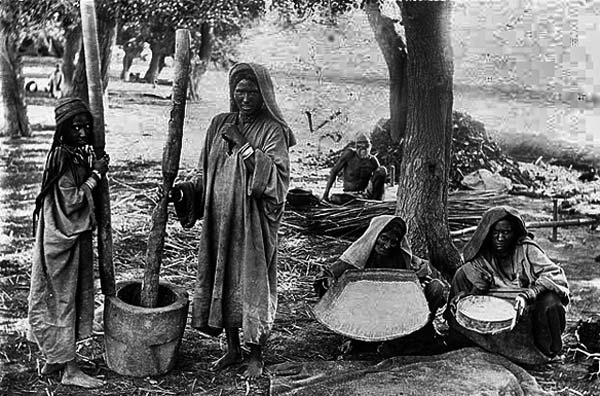
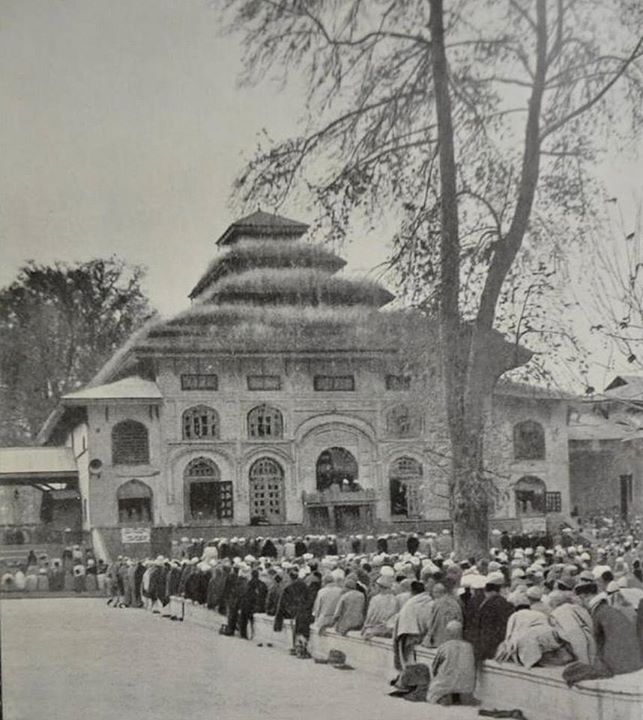
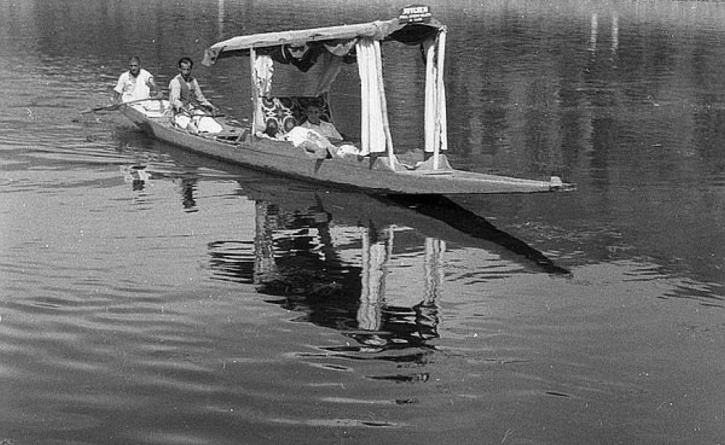
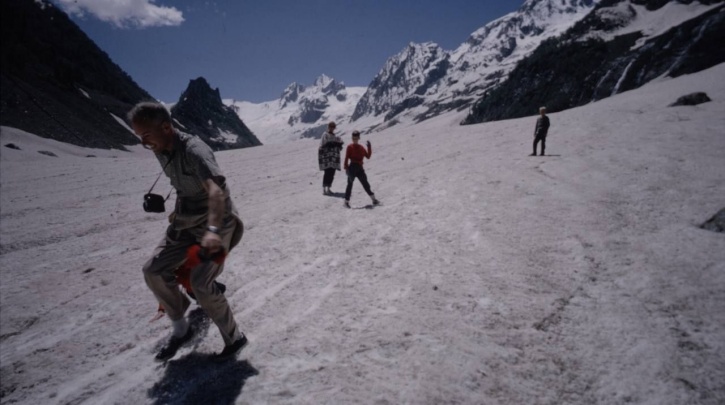
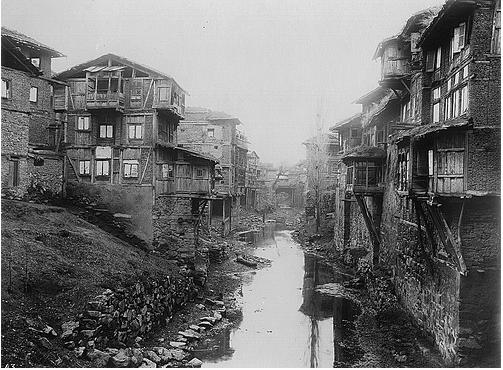
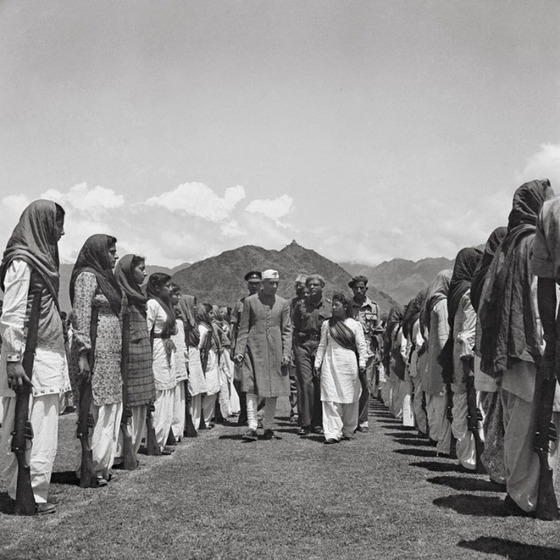
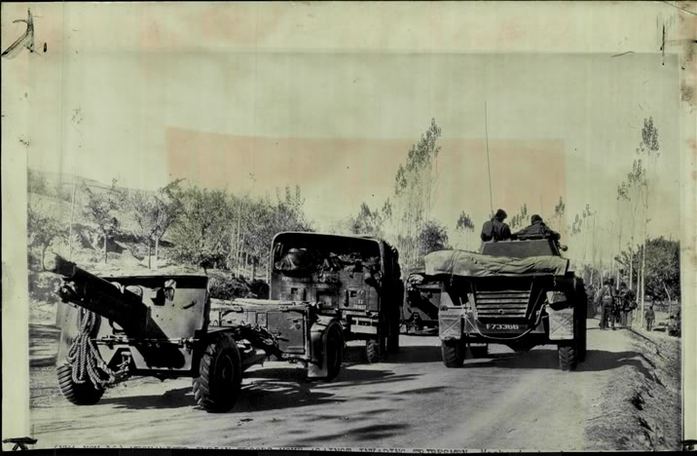

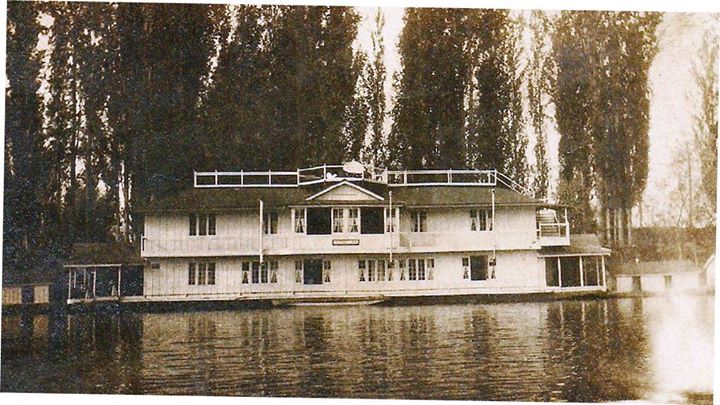
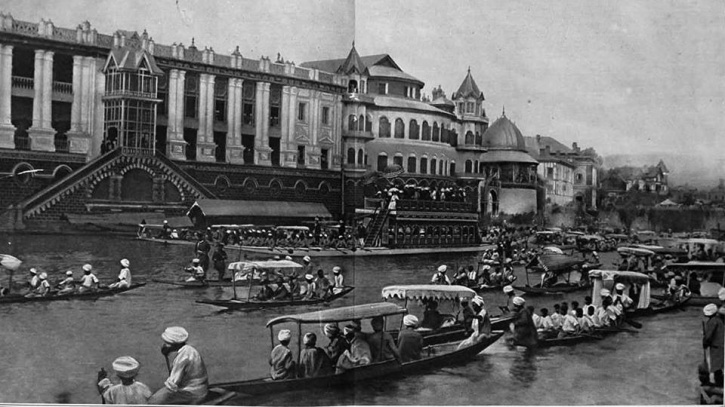
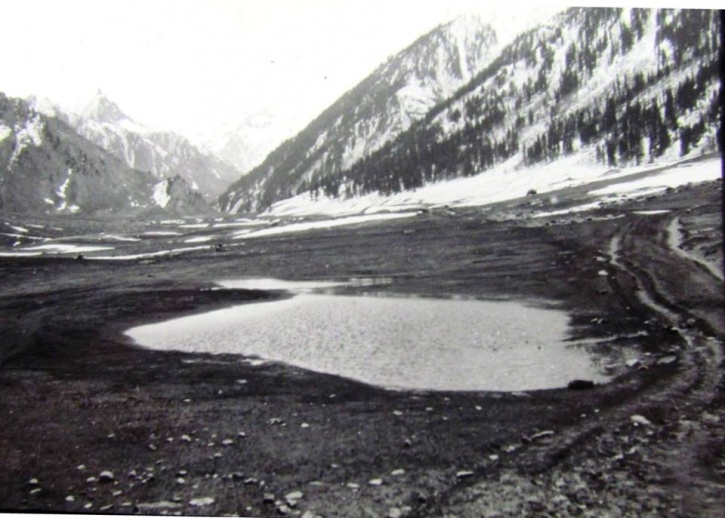
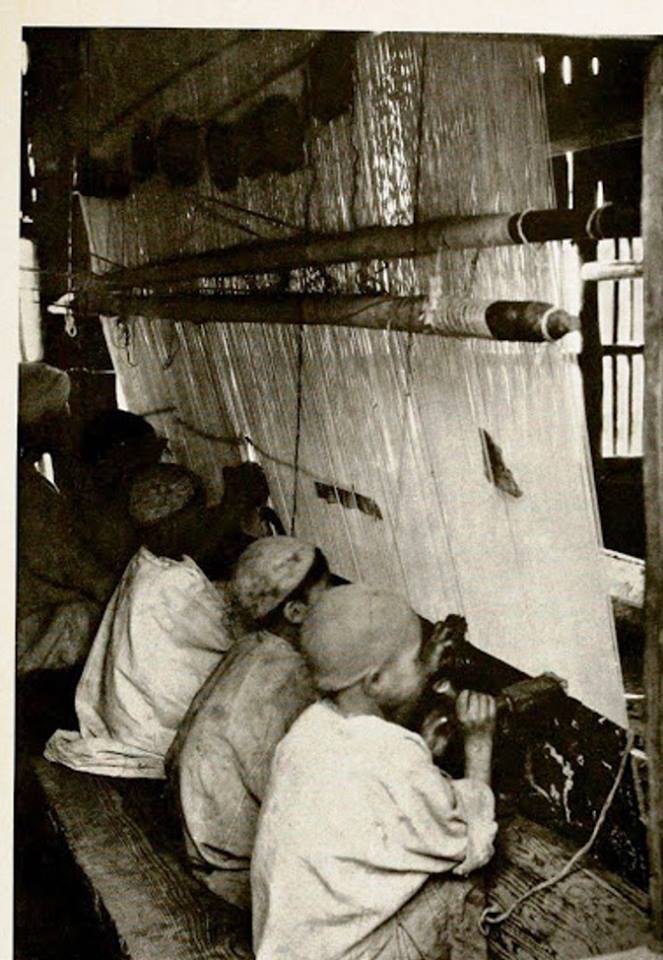
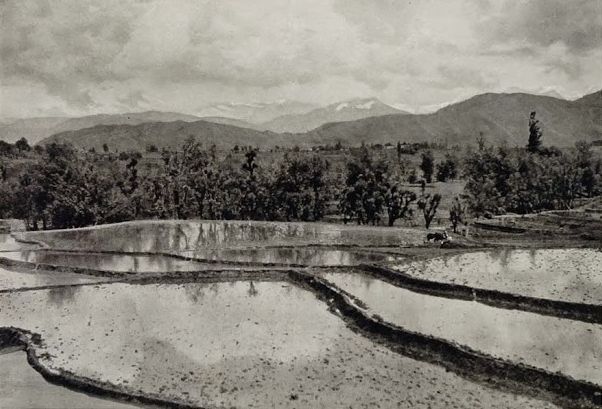
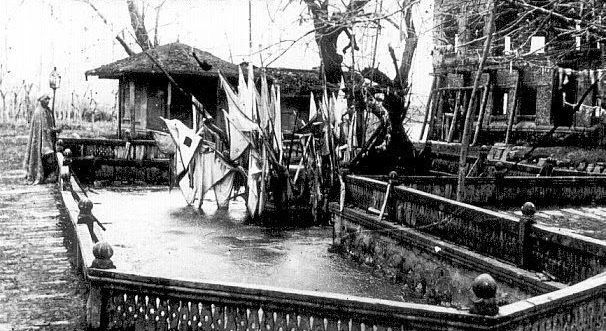
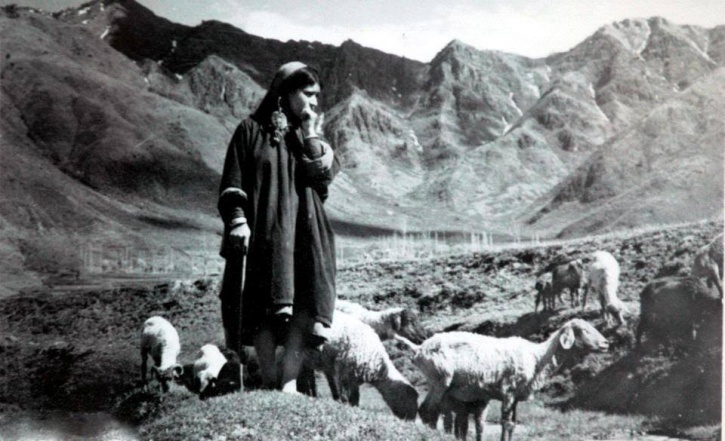
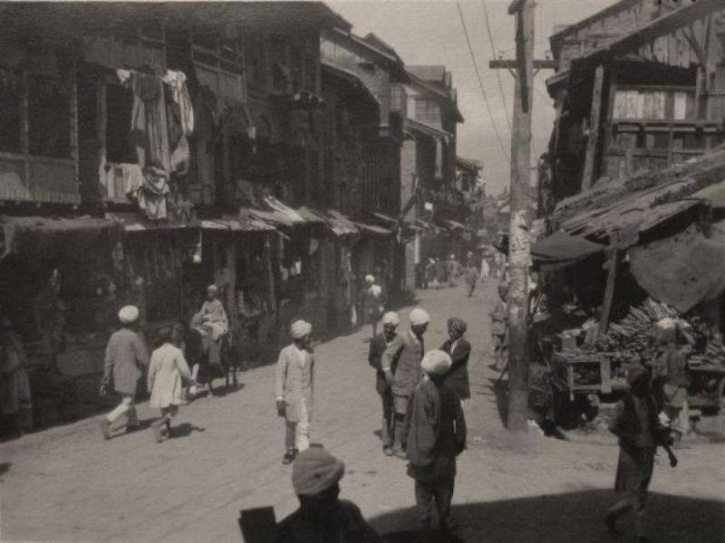


 Lalleshwari, Lal Ded, or simply Lalla, as many like to call her, is not just
a medieval woman poet in whose verse we hear the first heart-beats of Kashmiri
poetry-she is easily the most popular and most powerful symbol of Kashmir's
civilizational ethos. While her 'vaaks' or verse-sayings continue to dazzle us
with their high wattage incandescence, her role as a spiritual leader who
resolved the crisis of her times caused by a clash of two belief and value
systems-one indigenous and the other alien cannot but be regarded as momentous,
whether or not history recognizes its true significance. In both these
capacities it was her intervention that ensured continuity and saved indigenous
cultural structures from a total collapse at a time when the advent of Islam in
Kashmir was accompanied by an unprecedented political and social upheaval.
Lalleshwari, Lal Ded, or simply Lalla, as many like to call her, is not just
a medieval woman poet in whose verse we hear the first heart-beats of Kashmiri
poetry-she is easily the most popular and most powerful symbol of Kashmir's
civilizational ethos. While her 'vaaks' or verse-sayings continue to dazzle us
with their high wattage incandescence, her role as a spiritual leader who
resolved the crisis of her times caused by a clash of two belief and value
systems-one indigenous and the other alien cannot but be regarded as momentous,
whether or not history recognizes its true significance. In both these
capacities it was her intervention that ensured continuity and saved indigenous
cultural structures from a total collapse at a time when the advent of Islam in
Kashmir was accompanied by an unprecedented political and social upheaval.